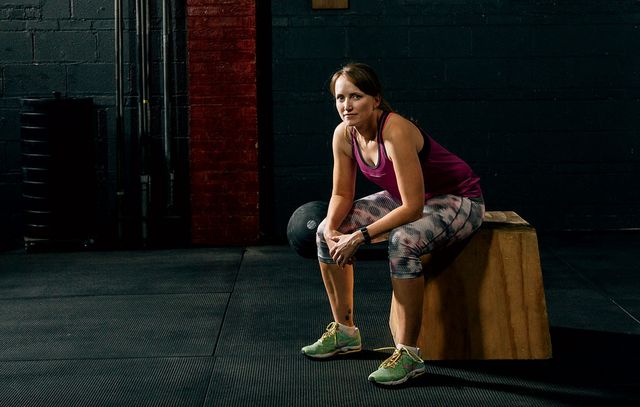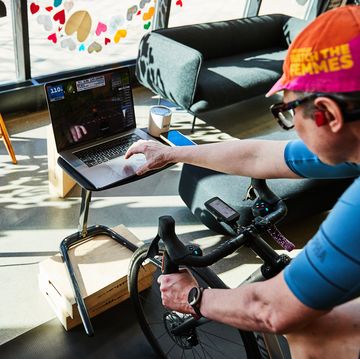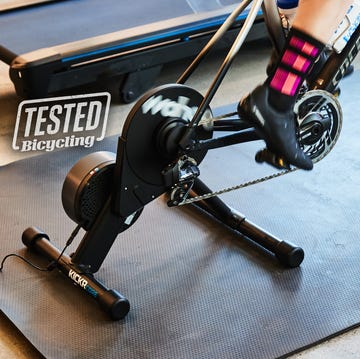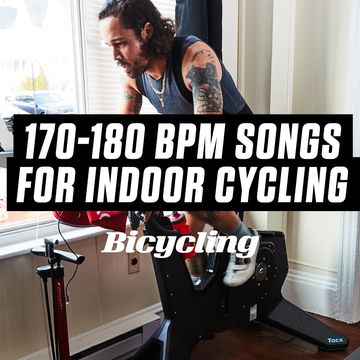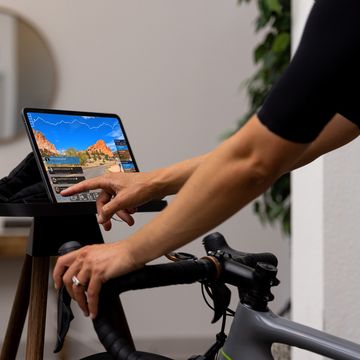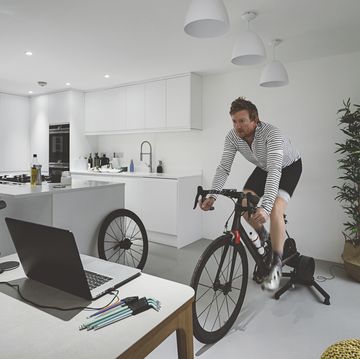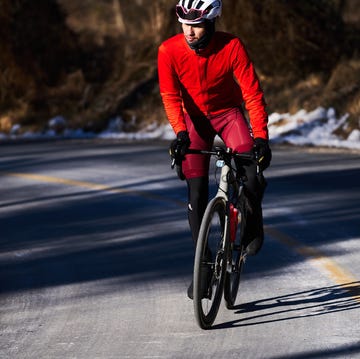It’s time to get seriously unstuck. Last year, when strength coach Jacques Devore introduced his radical training program, Maximum Overload for Cyclists, the book became an instant hit with thousands of riders looking to get stronger, leaner, and faster with less training time. These four success stories will fire you up to take your fitness to the next level in 2018. Get after it!
Melissa Zammit, 35
Oak Park, Illinois; operations manager at a cardiovascular research company
Results: Cracked the top 10
I race Category 4 in cyclocross, mostly local races in the Chicago area. My goal is to upgrade to Cat 3 next year or by the end of this season. I wanted to be more competitive, but I noticed that I wasn’t seeing that many gains from cycling alone. I was plateauing.
I had done weight training when I was a runner. But when I started cycling, I never made a connection between the weight room and the bike. If I did lift, it was with lighter weights because I never thought I could lift heavy loads.
Maximum Overload helped me overcome this mind-set of limiting my abilities by settling for easier weights. Now, I keep surprising myself with how much more I can lift. I was sore for the first few weeks, but now I feel much stronger on and off the bike.
About six weeks in, I was probably already 50 percent better than I was last year. I didn’t finish higher than 22nd last season, and my highest finish this year is ninth. I raced my first World Cup race this season too, and finished 25th on day one and 22nd on day two, but it was a much faster and more competitive race than the ones I’ve done in the past, so I consider it an improved result.
Plus, I feel better—I’m not redlining as quickly. Last year, I would be really whipped after a race. But this season I’ve raced twice in the same day and done well in the second race too. I’m signed up for two races again this weekend, and I have no worries at all.
RELATED: Strength Training Can Add Years to Your Life
Patrick McConnell, 46
Columbus, Ohio; pediatric heart surgeon
Results: Functional threshold power +13 watts, Deadlift +80 pounds, Broad jump +8 inches
The older I get, the more I value having better general health. I have increasingly more back trouble when I’m riding. Cyclists can develop osteoporosis; I’ve already broken my clavicle. And I’ve noticed that my recovery time between rides seems to be getting longer. I race mountain and road bikes—multiday stage races and endurance events like the Breck Epic and Haute Route Rockies. My times and abilities had begun to feel static, especially the last three to four years. I wanted to see if I could still improve in my racing, even as my age went up.
Reading Maximum Overload was an aha moment, like when you learn physics: You never quite see the world the same way. I thought, No shit, by lifting weights I’ll have more strength. Why do cyclists avoid the weight room like it’s the craziest place?
Before I started the program, I didn’t lift a weight, literally. I would do some core work—pushups, situps—so my back wouldn’t hurt, but beyond that, I would just ride. That’s why, when I started the workouts, I could deadlift only 130 pounds—pretty embarrassing. Over the first six weeks, that went up to 210. The program also includes a plyometrics component (exercises where you exert all-out, sometimes explosive, force), and my broad jump increased by 8 inches during that time.
The biggest change was that I started hitting my maximum efforts in workouts. I had violated the training concept of “go hard or go easy” my whole life. All of my rides were just kind of hard, but I never went to my limit. More than anything, that’s probably why I stalled out. After I started following Devore’s program, adding weights at high intensity, the improvement was clear. My functional threshold power (what I can sustain for an hour on the bike) went from 245 watts to 258 watts in six weeks.
The program is also helping to develop my core, and my recovery times are getting shorter too. I can commute to work again on my off days, and I’m less sore. It’s giving me the potential to use the bike for as long as I can. I hope to ride past my 60s.
Ted Sengpiel, 46
St. Louis, Missouri; sales executive
Results: April 2017 238 watts for 30 minutes, September 2017 360 watts for 40 minutes
I’ve been riding since my late 20s. I used to race triathlon, but I developed a lot of injuries putting in all that training time and not doing any lifting or stretching. I was paying a lot of money for physical therapy bills, and making my family angry. My wife would say, “You’re a 45-year-old man running around in tights, and you’re not getting paid for this. Why are you doing it?”
I had never done a criterium. I was fascinated because the Gateway Cup takes place in St. Louis. It’s a four-day event, and the professional teams come. I loved to go watch and always thought it’d be fun to race. I wanted to see if I could do it—even as a Category 4 or 5—so I decided to work toward it.
In April, I went out for the first time to our local weekly criterium, a Tuesday Night Worlds. I looked around, and there were all different sizes and shapes of people. I thought, I’ll be fine.
I got smoked. My legs felt like they were 300 pounds; my lungs felt like they were gonna fall out of my chest. I got lapped at least once.
It made me angry. I thought I was pretty good at this cycling thing. I obviously needed to do something different. Not long after that, I was going through the airport for work and I bought an issue of Bicycling where I saw an ad for Maximum Overload.
It’s been three months. I followed the workouts to a T, changing up my training instead of just going out and riding for 60 to 90 minutes as hard as I could. Before, I was riding five or six times a week. Now I’m down to two or three, and I’m incorporating more rest. It seems counterintuitive and it felt weird at first, because I would see other people riding and felt like I should be doing more. But it’s working. I feel less tired and have stayed injury-free. The stress of trying to “get my ride in” has vanished as well. Plus it’s good to have more time to be with my kids.
Not to mention I’m stronger. During that first Tuesday night crit in April, I averaged 238 watts for about 30 minutes. At the crit in July, I could hold 258 watts over the same amount of time. In August, that was 326 watts over 37:10. I wasn’t as tired after my rides, and I was recovering faster. I raced in the Gateway criterium in September. My average power over the 40 minutes of the race was 360, which is ridiculous, and my average speed was around 27 mph. This time, instead of just trying to get through it, I was challenging for a spot.
Try these three killer kettlebell moves to start crushing sprints and climbs:
Mariaelena Washington Thibodeaux, 53
Lakewood, California; registered nurse
Results: Strength up! Confidence Skyrocketed! Mood stoked!
I used to race mountain bikes in my mid-20s, and have been riding off and on for about 35 years. But I don’t get to ride as much as I want to now because of travel and work, and I experience a lot of aches and pains on the bike because of previous injuries. These days I mostly ride roads, and I started taking track cycling classes at the velodrome. The sessions kicked my behind. That made me want to get back in shape.
When I first started the program, I didn’t even have the strength to do the planks. Then I was so sore I couldn’t even sit down to go to the bathroom. But after six weeks, I started noticing the difference in how my body felt on the bike. My neck and back weren’t hurting, my arms weren’t hurting. It gave me a lot of confidence. I’d do a 25-mile ride and be able to keep up my strength. At the track, I’d try and stay with some younger, more experienced riders. My cadence was a little bit higher. My legs weren’t as sore, and I was able to keep up.
I’ve always been a healthy eater, but I was a vegetarian for a long time, and I wasn’t prioritizing protein. Following the book, I started eating less simple sugars, foods with fewer than seven ingredients, and smaller meals. I didn’t want to lose a lot of weight because I didn’t want to lose power, but I’ve lost some body fat, and have gotten a lot more toned.
It’s been five months. I’m faster without having to be on my bike all the time. And I’m able to get back on the bike much quicker after a ride. My body feels better, and with that comes mood, attitude, and everything else. I’ve worked in health care a long time, and it can wear on you. Now when I ride, I get into a zone, and worry less about work and life. The book has helped my whole lifestyle.
